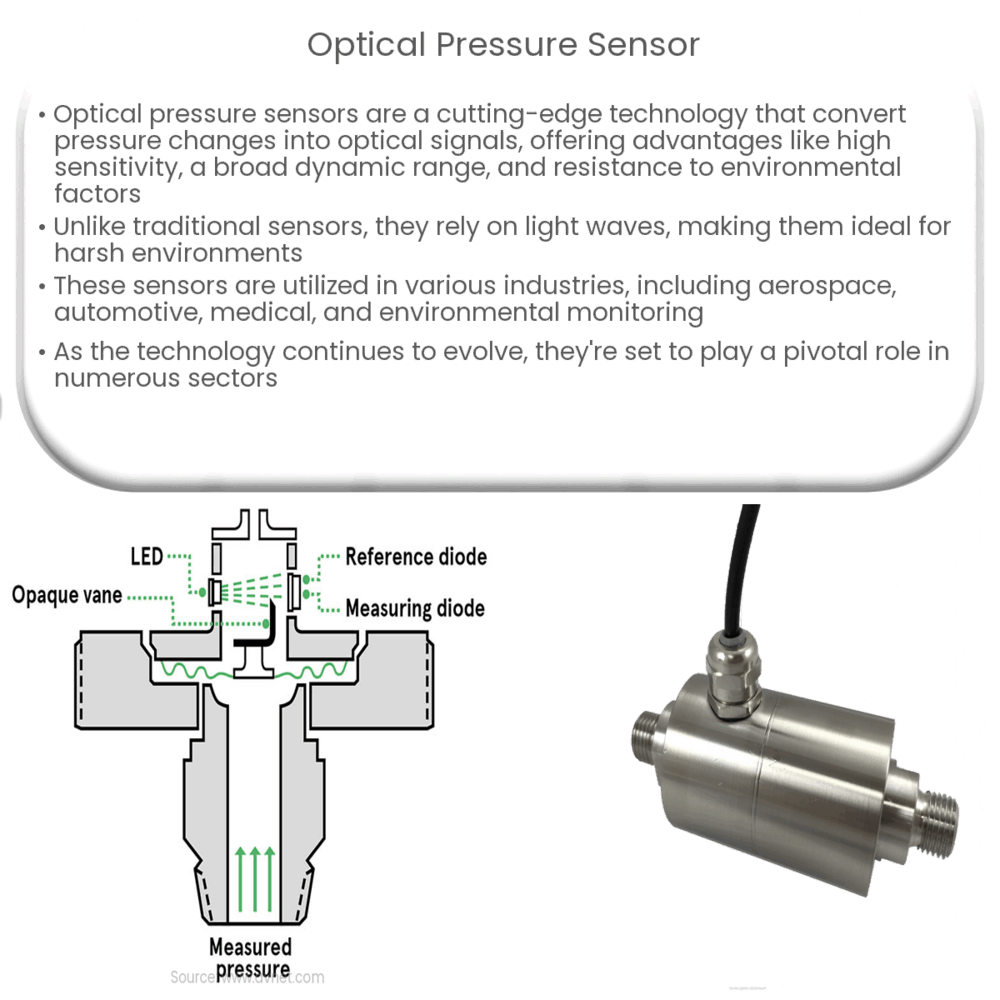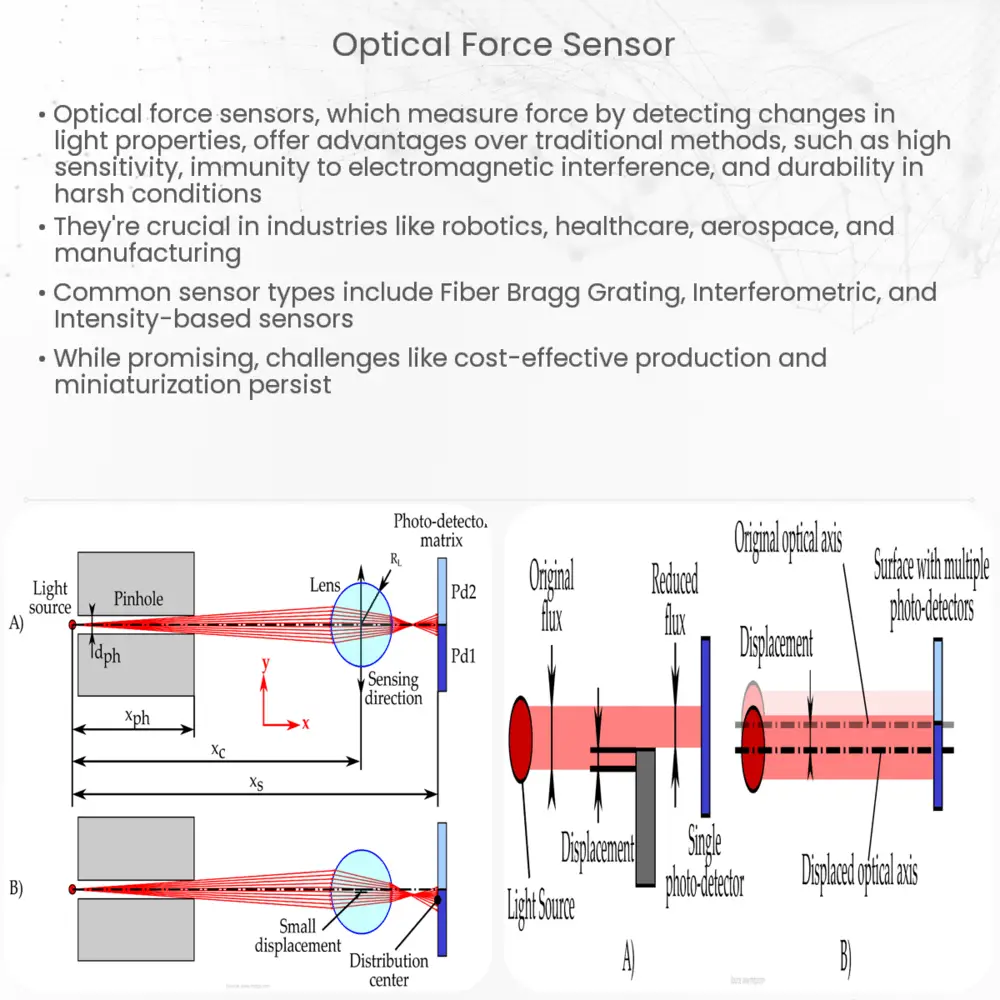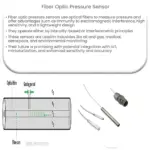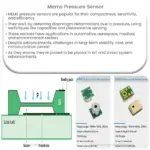Optical pressure sensors use light waves to measure pressure, offering high sensitivity, accuracy, and resistance to environmental factors.

Optical Pressure Sensor: A Comprehensive Overview
Introduction
Optical pressure sensors are an innovative and rapidly evolving technology that offers an accurate, efficient, and versatile solution for pressure measurement. With the increasing demands for high-performance sensors in various industries such as aerospace, automotive, medical, and environmental monitoring, optical pressure sensors have emerged as a promising alternative to traditional sensing methods. This article aims to provide an in-depth understanding of optical pressure sensors, their working principles, advantages, and potential applications.
What is an Optical Pressure Sensor?
An optical pressure sensor is a type of transducer that converts pressure variations into measurable optical signals. Unlike conventional pressure sensors that rely on electrical or mechanical means to detect pressure changes, optical pressure sensors use light waves to measure pressure. This enables them to be more resistant to environmental factors such as temperature, humidity, and electromagnetic interference, making them ideal for use in harsh conditions.
Working Principle of Optical Pressure Sensors
Optical pressure sensors operate based on various optical sensing techniques, such as fiber Bragg gratings (FBG), Fabry-Perot interferometry, and surface plasmon resonance (SPR). While each technique has its unique characteristics and advantages, they all share the fundamental principle of detecting pressure-induced changes in the optical properties of a sensing element.
In the case of FBG-based sensors, for example, the sensing element is a periodic variation in the refractive index of an optical fiber, which reflects a specific wavelength of light. When pressure is applied to the fiber, the grating’s periodicity changes, causing a shift in the reflected wavelength. By measuring this wavelength shift, the pressure can be accurately determined.
Similarly, Fabry-Perot interferometry-based sensors use the interference pattern generated by multiple reflections of light between two parallel surfaces. Pressure-induced changes in the cavity length or refractive index lead to a shift in the interference pattern, which can be detected and correlated to the applied pressure.
Advantages of Optical Pressure Sensors
Optical pressure sensors offer several key advantages over traditional sensing methods, including:
- High sensitivity and accuracy: Optical pressure sensors can detect minute pressure changes with high resolution, allowing for precise measurements in various applications.
- Wide dynamic range: These sensors can measure a broad range of pressures, from extremely low to very high, making them suitable for diverse applications.
- Resistance to environmental factors: Optical sensors are immune to electromagnetic interference and are less sensitive to temperature and humidity fluctuations, resulting in stable and reliable measurements.
- Long-term stability: Due to their non-contact nature and minimal wear and tear, optical pressure sensors exhibit excellent long-term stability and reduced maintenance requirements.
- Remote sensing capability: Optical sensors can be easily integrated into fiber optic networks, enabling remote and distributed pressure sensing over long distances.
Potential Applications of Optical Pressure Sensors
With their unique advantages, optical pressure sensors have found widespread use in various industries and applications, such as:
- Aerospace and defense: Monitoring pressure in fuel tanks, hydraulic systems, and structural health monitoring of aircraft and spacecraft components.
- Automotive: Tire pressure monitoring, engine performance diagnostics, and fluid level sensing.
- Medical: Blood pressure monitoring, intraocular pressure sensing for glaucoma diagnosis, and intracranial pressure measurement for neurological conditions.
- Environmental monitoring: Atmospheric pressure measurement for weather forecasting, oceanographic studies, and monitoring underground water levels.
- Industrial automation: Process control, leak detection in pipelines, and monitoring pressure in high-temperature or chemically aggressive environments.
- Oil and gas industry: Downhole pressure monitoring, wellhead pressure sensing, and pipeline integrity management.
Challenges and Future Prospects
Despite the numerous advantages and wide-ranging applications of optical pressure sensors, there are still some challenges that need to be addressed. The development of cost-effective and scalable fabrication techniques is crucial to make these sensors more accessible for various applications. Additionally, improving the sensor’s compatibility with different materials and environments will help further expand their use in diverse fields.
Emerging technologies, such as nanophotonics and micro-electromechanical systems (MEMS), hold the potential to revolutionize the field of optical pressure sensing. By incorporating advanced materials and miniaturized components, these next-generation sensors can offer improved performance, increased functionality, and reduced size, making them suitable for a wider range of applications.
With ongoing research and development, optical pressure sensors are poised to become an indispensable tool in various industries, providing accurate and reliable pressure measurements in even the most challenging environments.
Conclusion
Optical pressure sensors represent a promising alternative to traditional sensing methods, offering numerous advantages such as high sensitivity, wide dynamic range, resistance to environmental factors, long-term stability, and remote sensing capability. These features make them suitable for a wide array of applications, from aerospace and automotive to medical and environmental monitoring. As research and development continue to advance, optical pressure sensors will likely play an increasingly important role in various industries, providing accurate and reliable pressure measurements in a wide range of settings.




